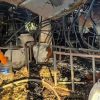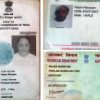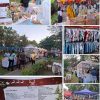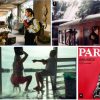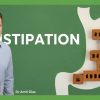Goa is abuzz with excitement as vintage bike and car owners, users, collectors and fans are decking […]

THE ANATOMY OF VICTORY
History, Jan 21 - Jan 27 2017, Opinion, Politics January 21, 2017The victory of the anti-merger group, which wanted to retain Goa’s unique identity, was a joint effort of majority and minority communities. The leading architects of the Opinion Poll victory 50 years ago on January 19, 1967 included Hindu and Catholic leaders. Prominent among them were Catholics Dr Jack Sequeira and Loyola Furtado and Hindus Ravindra Kelekar, Chandrakant Keni and Uday Bhembre, not to mention the bard of the opinion poll Ulhas Bhuyao. Among the greatest contributions was that of late V M Salgaonkar, who financed the campaign and staked his entire industrial empire to preserve Goa’s identity despite pressure from the then government and the Maharashtrian lobby at the Centre. To commemorate the Golden Jubilee of the Opinion Poll victory, and in honour of V M Salgaonkar, we have uploaded the book Triumph of Secularism on the opinion poll’s history on www.goanobserver.in for free access courtesy its publisher Dattaraj Salgoankar, son of V M Salgaonkar
ABITTER MONTH LONG campaign came to a close at 5pm on January 14, 1967, and calm descended on Goa after a hectic and bitter public debate for and against merger. The loudspeakers finally went mute. Bandodkar left to offer prayers to his family deity and Sequeira attended to his personal business. The day of the Opinion Poll was an epoch-making day as it was the first time in India when its citizens were asked to give their verdict in such a democratic manner and prove that they were worthy of the trust put in them by the nation. The Election Commission announced the final voters’ list on January 15.
About 25,000 additional people had registered their names in the list after November 1966. Jawaharlal Nehru’s pledge to the territory after liberation – that the people of Goa would decide the future status of their territory – was finally redeemed on January 16, 1967. The verdict of the Poll was expected on January 18. The poll campaign ended on a Saturday, allowing the whole of Sunday for the dust and heat raised up by the poll arguments to settle, so that the poll could be conducted in a calm atmosphere on Monday. However, volunteers of different parties were seen visiting and canvassing for votes door-to-door.
Start Of Polling
THE historical Opinion Poll got underway at 8am on Monday, January 16, 1967, with two loud toots from the Champavati, a passenger ship anchored at Panaji-Goa, which signalled the starting of the polling process. To the surprise of polling officials, headed by the then chief election commissioner (CEC), K.V.K. Sundaram, long lines started forming even before the time for commencement of polling at the 442 booths that had been set up throughout Goa to enable the electorate of 3,88,000 voters to cast their vote.
The polling was so brisk that, at some booths, as many as hundred votes were cast in the first hour itself. Long queues were still visible even at the end of the scheduled polling time of 5pm, compelling electoral authorities to extend the polling time to 7pm. In some cases, petromax lamps had to be used. In Cortalim, more than 100 voters cast their votes after 5pm. Proprietors in Panaji had to replace waiters who went to cast their votes. Addressing a press conference later in the day, the CEC reported that, after nine hours of polling, the percentage of voting was 80-90 per cent or even more.
Cent Per Cent
ATTENDANCE at some booths was as high as 100 per cent. Such was the desire to vote and impact the outcome of the Opinion Poll, that an octogenarian woman from a remote village and seven patients, including two bedridden women, from a hospital made the arduous journey to the polling booth. Aged men and women, as well as women dressed in traditional, festive attire were seen. Enthusiasm for participating in the polls was so high that a 92-year-old journalist, Baptist Vaz, cast his vote from a wheelchair in Loutolim. A 75-year-old bishop was also among the first to cast his vote. It was also alleged that a large group of underage seminarians from the Rachol Seminary cast their vote. People from all walks of life thronged to the polling booths and taxi drivers had a field day ferrying people back and forth.
The CEC spent the day taking rounds of the constituencies while R K Gupta, the assistant poll commissioner, noted that the ‘situation was satisfactory’. While Dr Jack Sequeira cast his vote in Panaji, Dayanand Bandodkar voted at the Lyceum at Altinho. The Champavati and Konkan Sevak transported a large number of voters to polling booths to exercise their franchise. Others came on the Sabarmati, while still others flew in to Goa from Mumbai, Delhi and as far as Nairobi to ‘perform their sacred duty’. The polling, according to reports in the national and local media, was by and large orderly and peaceful, except for a moment of panic in a polling booth in the hilly village of Surla. So great was the enthusiasm to participate in the polling process that not only human residents of Goa, but even wildlife decided to visit polling booths. According to a report that appeared in the Times of India on January 17, 1967, the first voter at a polling booth in Surla was a panther! In Savoi-Verem, some 1,400 villagers decided to boycott the poll as a protest against the Bandodkar ministry’s failure to construct roads linking their village to the urban areas. However, both camps successfully persuaded them to change their minds.
Counting Day
COUNTING Day was declared a public holiday and the roads were deserted. More than 2000 policemen, including the Central Reserve Police, were posted at various booths while mobile police patrolled the towns and villages. The armed constabulary of the CRP escorted the ballot boxes from 442 polling stations to Institute Menezes Braganza in Panaji where they were kept under lock and key overnight. The ballot boxes started arriving from across the union territory under police protection. Counting was expected to begin at 9am on Tuesday, January 17 and the results were expected to be declared by Wednesday noon.
Unlike in other elections held in the country prior to 1967, and the first general elections held to the Legislative Assembly of the union territory of Goa in 1963, the choice in the Opinion Poll was limited to merger with Maharashtra or Goa retaining its status as a union territory. The symbol for merger was a flower whereas the symbol for maintenance of status quo was two leaves, more popularly referred to as don pannam. The excitement and enthusiasm that marked the Opinion Poll was dramatised by the fact that the polling percentage was as high as 82 per cent as against the polling percentage of just over 70 per cent in the first Assembly elections.
Of the total electorate of 3,88,432 for the Opinion Poll, 2,16,000 were estimated to be Hindus, 1,57,000 Roman Catholics, 6000 Muslims and 9000 were personnel of the armed and security forces that had been stationed in Goa after liberation. According to reports in the national press, of the 25,000 new voters who availed of the opportunity to register themselves specifically for the Opinion Poll, 9000 were Catholics and the rest were Hindus. It had also been reported that, on the eve of the Opinion Poll, several shiploads and trainloads of expatriate Goans arrived in Goa to participate in the Opinion Poll.
The electorate also included a large number of officers deputed from other states, the majority of whom were from Maharashtra with a significant proportion from Karnataka as well. The arrival of an estimated 500 men of the Maharashtra State Reserve Police to cast their votes at the Lyceum evoked a storm of protests from UGP and Congress workers who blamed Maharashtra for its unscrupulousness. Treasurer of the GPCC Apa Karmalkar released a letter of protest to the press which he had written to Chief Electoral Officer P B Venkatasubramaniam informing him that it was obligatory on the part of the Electoral Registration Officer to delete the names of the personnel on deputation from the electoral rolls, including the SRP17. The Chief Electoral Officer had then clarified that general instructions were issued that the names of those not ordinarily resident in Goa should be removed from the poll lists and a written notice was given in the case of the Reserve Police. Later, Chief Opinion Poll Officer D K Das, stated that the SRP were already registered in the voters’ list and the
rule permitted those who were registered in the list to vote.
GUESSING GAMES
WRITING on the eve of the Opinion Poll, the Free Press Journal from Mumbai speculated that if voting was done purely on communal lines, the pro merger group would win by a substantial majority. But, apparently, it was not going to be fully that way because factors other than Marathi v/s Konkani, which was a major issue in the 1963 elections, had come to the fore during the campaign preceding the Opinion Poll. The Free Press correspondent opined that while the anti-merger votes had remained more or else constant since the Assembly elections, the merger votes had split due to the dissatisfaction of even staunch Maharashtrawadis with the performance of Dayanand Bandodkar’s ministry and the high cost of living. Free Press also speculated that the majority of the 30,000 votes which went to the Congress in the 1963 elections were likely to go in favour of merger.
The counting of the votes extended over three days, with fortunes fluctuating dramatically – to the dismay and exhilaration of both sides. The Central Reserve Police Force (CRPF) checked and counterchecked identity cards and scores of police and officials guarded the room that was located at the left of the presiding table “where under lock and key, lay the destiny of Goa”. At four minutes to nine, the top brass of the Poll, led by Das, addressed those who were associated with the counting along with Sundaram, the Development Commissioner Balasubramaniam and CEO P B Venkatasubramaniam. Close to them were Victoria Fernandes (Congress), V S Karmali (MGP), Enio Pimenta (United Goans Party-Furtado), Dr Jack Sequeira (United Goans Party-Sequeira) and Divakar Kakodkar (Frente Populare-Communist). The material to be counted was kept in pigeonhole shelves behind the Commissioner. A large crowd gathered around Institute Menezes Braganza where the votes were counted and announced on a loudspeaker and on Akashwani-Panaji, thus breaking the air of expectancy. The Election Commission engaged 15 groups of three members each to undertake the counting. A graph was plotted every 15 minutes, showing the cumulative percentage of votes for and against merger and six teams counter-checked the figures.
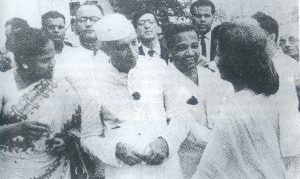
HISTORIC VISIT: During a historic visit to Goa in May, 1963, Prime Minister Jawaharlal Nehru repeated his often-stated pledge that Goans in time would be given the opportunity to decide thier own future. he is seen here with Laura D’Souza and family friend Parushottam Kakodkar, a key player in events leading up to the opinion poll. Nehru’s unexpected death in 1964 threw Goa’s future in doubt.
On the first day of counting, when 12,13,74 of an estimated 3,30,000 were counted over 167 booths, the champions of Goa‘s merger with Maharashtra secured a lead of 10,579 votes. The anti-merger group secured 53,756 votes at the end of the day, while 64,335 votes went in favour of merger with 3,024 votes declared invalid. Although the pro merger group had a lead, they were disappointed with the narrow margin. The anti-merger workers, on the other hand, were thrilled that they were able to make inroads into crucial constituencies. The future at the end of day one remained unpredictable as the votes for 17 constituencies were yet to be counted.
There was a dramatic change in fortune on the second day, however, when counting went on till 8.30pm. The group that fought to maintain status quo made strong comebacks. It was a day of high drama with the pro-merger lead falling, rising and falling again while counting progressed through 11 constituencies. The overnight margin of 10,579 enjoyed by the pro-merger group fell to 2,455 by noon on the second day of counting. But, by early afternoon, the pro-merger vote picked up quickly, giving them a massive lead of 20,040. This was, however, the peak that the pro-merger faction could not sustain. It was all downhill after that and, when polling officers began counting votes from South Goa, especially Salcete, at about 7.25pm, the pro-merger group gained significant leads to end the day on a high of over 8,000 votes ahead of the pro merger group. By the end of the day, 28 of the 32 constituencies had been accounted for. The merger group had secured 1,25,066 votes while the anti-merger forces had managed to secure 1,33,954 votes. A total of 6,495 votes were disqualified.
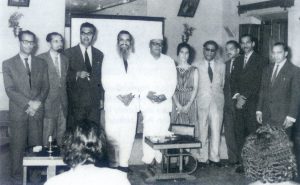
OPPOSITION: Dr Alvaro de Loyolo Furtado ( third from left)formed the United Goans Party in 1963 to counter the growing movement to merge Goa with Maharashtra. UGP members seen here with him included ( L or R) Orlando Lobo, Enio Pimenta, Dr Jack Sequeira ( President), Narcinva Damodar Naik (VP), Urminda Lima Leitao, Vassudev Samalkar, an unidentified gentlement, Dr Luis Proto Barbosa and Dr Maurilio Furtado. Though the UGP lost the first general election, it played a key role in winning the opinion poll four years later.
The pro-merger early lead on the second day of counting was primarily because of the massive support they enjoyed in St Estevam, Madkai, Ponda and Shiroda. But, to the shock of the merger camp, they lost to the anti-merger camp in Sanguem, which was traditionally an MGP stronghold that voted in former Law Minister Tony Fernandes to the first Legislative Assembly of Goa on the MGP ticket. Ponda was the last constituency from where the pro-merger group got a majority. The predominantly Catholic constituency of Benaulim gave 10,000 votes to maintain status quo. Navelim put the last nail on the coffin of merger by adding another 10,000 to the tally of those who wished to retain and preserve the identity of Goa. In Madkai, the constituency of Bandodkar, the pro-merger vote was raised to a respectable level, but even here 15 per cent of the Hindu votes went against merger. At the end of the day, 26,55,515 votes were counted and 267 polling stations were completed. St Estevam, Madkai, Ponda, Shiroda and Canacona voted for merger while St Cruz, St Andre, Sanguem, Quepem, Cortalim, Cuncolim and Benaulim remained on the side of the union territory. Margao and Mormugao were mixed areas that were unevenly divided while Curtorim and Cortalim were Christian strongholds. By 7.15pm, the anti-merger group celebrated victory. In Navelim and Cuncolim, not a single vote was disqualified. Of the 55 postal votes, two went in favour of merger, 46 went against merger and seven failed to qualify. With the predominantly Hindu constituencies providing a slender majority, the hopes of merger was largely unfulfilled as a spokesman of the MGP opined, “At the eleventh hour, some forces worked against us.” Vithalrao Karmali commented, “At around 7.25pm, when Don Pannam took the lead of 214 votes, I felt that the Maharashtrawadis are going to face a defeat.” The three constituencies that were taken up at the fag end of the day were responsible for the landslide in the vote. At least 54.2 per cent of the voters cast their votes in favour of merger. Kakodkar and the bulk of Congressmen who were associated with the anti- merger front opined that, while gigantic forces came to the side of the pro-merger group, Goans alone were on the side of the union territory: “Reasonableness and Goa were with us”.
Merger Ghost
THE last rites to the persistent ghost of merger were administered on Thursday, January 19, 1967. The defeat of the pro-merger group was confirmed when counting of 24 out of 28 constituencies was complete as the remaining four constituencies was expected to take the anti-merger group to an unpredictable win. When the counting process came to an end at around 2pm, the Opinion Poll Commissioner, D K Das, announced that Goa had rejected the merger with Maharashtra and opted to remain a union territory by a majority of over 34,000 votes. The anti-merger supporters celebrated the victory with crackers and shouted slogans of ‘Kendrashashit Gomantak Zindabad’ (Long live Goa controlled by the Centre). A large crowd that had gathered outside the town hall gave a throated cry of ‘Amchem Goem, amkam zai’ and students jumped on the streets with candle lights. The main road near the hall was blocked and crackers were burst as a typical Goan expression of undisguised elation. The anti-merger forces, much to the surprise of everyone including themselves, won the Opinion Poll by a margin of 34,021 votes. Of the 3,17,633 voters who exercised their franchise in the Opinion Poll, 1,72,191 (54.2 per cent) favoured the continuation of Goa as a union territory as against 1,28,170 (43.5 per cent) of the voters who opted for merger while 2.3 per cent of the votes were invalid. The total number of votes polled was 3,17,633, out of a total electorate of 3,88,392.36.
K Kamaraj felt that the verdict had to be accepted by everybody while S K Patil opined that “We must respect the wishes of the people.” Speaking to the media at the Srinagar airport, Indira Gandhi expressed her happiness that the people of Goa had peacefully and amicably decided their fate in the most democratic manner. “We will respect the decision taken by the people of Goa” and naturally implement the verdict of the people. Nijalingappa saw the outcome as a slap to the language policy makers. Accepting defeat, the president of the BPCC, P G Kher said, “I bow down to the democratically expressed wishes of the people of Goa.” M S Aney and Vasantrao Dada Patil congratulated Goans for the democratic verdict. Simon Fernandes, the general secretary of the Delhi Goans Association, and Romy Oliveira rejoiced at the victory and saw it as the first step towards a Konkani-speaking state.
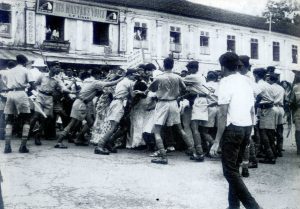
UNREST: Police reinforcements move in, using their lathis to push back the restive crowd. Many of the policemen were from Maharashtra, and had no sympathy for the protectors. Dozens of women were caught in the police cordon
Dr Alvaro Loyola Furtado, founder of the UGP, attributed the outcome of the Opinion Poll to God: “Goans believe in God and He can write straight on crooked lines.” The poll, in retrospect, was seen as a felix culpa in which Goans could settle down, manage their own affairs and plan ahead for the social and economic prosperity of the territory. Ironically, after the poll results (which was a rebuff not only to the MGP, but also its political patrons in Maharashtra), the chairperson of the Sampurna Maharashtra Committee, Udhavrao Patil, made a scathing attack on Y B Chavan because of the incorrect and weak policies adopted by the Maharashtra government and the union home minister, on account of which the poll went against Maharashtra. The former vice president of the MGP blamed Bandodkar for the defeat: “If he had honoured the mandate of the Steering Committee of the MGP, he would have saved merger.” The MGP leaders themselves opined that their supporters had cheated them. Unfortunately, the official views of V P Naik and other ministers in Maharashtra could not be taken as they had gone to their respective constituencies to file their nominations when the Opinion Poll results were declared.
Anticipating extreme reactions from rival groups, the authorities had taken precautions. The then administration, headed by the Lieutenant Governor, prevented the anti-merger group from celebrating their victory in true Goan fashion by invoking Section 144 and banning public meetings throughout Goa for seven days. Even worse, several thousands of anti-merger supporters, who had taken out a boisterous procession, were lathi-charged and forced to disperse. Carrying branches of trees, the supporters went through the streets of Panaji shouting slogans. Four tear gas shells were fired in the heart of Panaji to disperse them. Dr Sequeira angrily commented, “I am absolutely shocked at the disgraceful way in which it is clamped down on us in this moment of our great victory… it is regrettable that the Home Minister, who is a Maharashtrian, does not seem to know how to take defeat.” The police also arrested 36 persons and detained two truckloads of people from a distant suburb who were celebrating their victory. On account of the curfew, many arranged for celebrations in hotels, bars and private places. The Natyamahautsav that was scheduled in Panaji on January 21 was postponed.
After the declaration of results, Sequeira stated, “Now we will raise a new movement demanding a separate state of the Konkan region. The people of Goa have strongly voted against merger and now the issue of merger is a part of history.” He said his party would carry on the struggle for the recognition of Konkani as the state language and to make Goa a separate state. The next demand would be for a Konkan state. Dr Loyola Furtado announced that the real struggle for a separate state would begin henceforth and the UGP would have nothing to do with the GPCC unless it changed its manifesto and supported the demand for a separate state of Goa.





